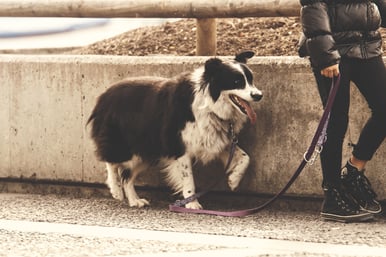It is no secret that moving any distance is a monumental event. In addition to the logistics of moving, the actual process behind renting is nuanced. Each country has its own requirements that must be fulfilled before signing a lease. Below, you'll find an outline of the rental process in the United States that will help you get moving!
Many people think that the first step to renting is going online and viewing properties, but there is so much more to consider! You may find that the more you learn about the rental process, the more complex it seems. While it is possible to tackle this new challenge on your own, having a local consultant can truly help you focus on the things that are most important to you without worrying about other details slipping through the cracks. Here are a few things to consider before starting your rental search:
The Commute Long commutes, navigating new and complex freeway systems, and increasing urban traffic can be extremely frustrating, especially when you are new. Be sure to think about how much of your day will be spent in transit, as time is your most valuable resource. Can you take public transportation? Is there ample parking in the city? Where do guests park when they visit you?
The Social Scene Most big cities have concerts, sporting events, museums, nightlife, and all sorts of entertainment (including family activities). The decision of being immersed in the hustle and bustle of the city or retreating to a quiet neighborhood after work will greatly impact your lifestyle. Where do your collegues like to live? Is there entertainment within walking distance from your rental accommodation?
“Pet Friendly” Housing Some rental properties are “pet friendly” and allow pets/domesticated animals such as dogs, cats, birds, fish, guinea pigs, rabbits, hamsters, gerbils, and small reptiles....but, that is not always the case. You may have fewer housing options if you have a pet. Additionally, landlords often have limits on the type and number of animals allowed, as well as restrictions on breeds and animal weight. Notify the landlord during the home selection process if you are a pet owner. Additional fees and/or deposits are typical so be sure to add this to your budget. Don't forget to organize transportation for your pet too!

The Neighborhood Think about how you would describe the feel of your current neighbhorhood to a friend. Before you move, consider that description and decide if you want a similar feel or something different. Do you want a neighborhood with a unique atmosphere and lots of activity, a quiet respite from your busy day, or somewhere in between? Each neighborhood has its own feel and personality. A quick online search will help give you a general idea about your new city pretty quickly. Local consultants are awesome resources for sharing favorite spots to eat and relax, as well as offering insightful tips for daily life in each area.
Once you've completed your prelimerary research, the real fun can begin! As you browse potential properites, picture yourself actually living there. How will the rental accommodate your daily life? The next phase of the rental process is, of course, searching for an available unit.
Find a property Now that you have researched a bit and have some neighborhoods in mind, it’s time to zero in on a property! Begin by checking all those well-known rental sites and reach out to friends and family. Many successful rentals have been found in the unlikeliest of places!
Dream List Start off by making yourself a dream list. In your wildest imagination what would you love to have in your new home? A pool, a gym, washer and dryer, parking spot? Start off by making a wish list, then make yourself a must-have list. This must-have list should include items that would make an apartment an automatic no, for instance, a 10-floor walkup, no central air conditioning, no dishwasher, etc. Try to be realistic with this list too so you don’t set yourself up with goals that just aren't possible. General research on rentals in your destination will likely reveal common "pros and cons" of typical units available in that area. Making both of these lists will help make the search easier and faster.
Online Rental Sources When searching online for rental properties, there are plenty of options: Craigslist, Zillow, apartments.com… the list goes on. While some people have a negative attitude towards Craigslist and other online sources, in many markets, they are extremely popular. And while it’s definitely “unregulated” and you should move with caution, in some very fast-moving markets, they are a great source for finding rentals because property owners have figured out it’s the quickest and simplest place to list their home or apartment. And, because Craigslist automatically removes many old listings, it can “self-regulate” in these fast-moving markets. Be smart when using these sites; never sign a lease sight unseen, meet with anyone alone, or agree to something that seems "too good to be true."
Roommates and Furniture Depending on your location, budget, preferences, and assignment length, having a roommate or renting furniture might be on your list of must-haves. Options for finding roommates and furniture are endless, and can oftentimes be found on the same websites mentioned above. Craigslist can be a great resource for both of these things too! As you are begining the search process, keep an open mind and expect to compromise.

Submit an Application Before applying, be sure to prepare copies of the documents you will need when submitting your application. The more organized and professional you seem, the more likely you are to secure the property you want.
Most landlords will ask for some combination of these documents:
- Identification (driver’s license, passport)
- Letter of employment (including position and total compensation)
- Recent pay stubs
- Current copy of your credit report
- Previous rental history (and references from landlords)
- Other documents may include tax records, a recent bank statement, a copy of a previous lease, or depending on your situation, a lease guarantor who will guarantee that the rent will be paid. This is similar to co-signing a loan.
- A security deposit will be due once your application is approved, and you sign a lease. The security deposit is typically one or two times the monthly rent, or more, at the landlord’s discretion, so it is important to confirm the amount before you sign.
Sign a Lease and Move In Be sure to review the lease! Verify that obvious information is correct, such as names, address, rent amount, and so on. If there was anything promised or negotiated verbally, it should be included in writing in the lease document (or an addendum). Remember, you will be entering into a binding legal contract and you are responsible for understanding your obligations.
Pay attention to, and be sure you are comfortable with:
- Rules about landlord access (i.e., your privacy)
- Any maintenance required of the tenant (such as lawn care)
- Physical changes tenants may or may not make to the property, such as painting walls
- Payment of utilities (mostly you will be responsible)
- Rules about subletting
Walk-Through Prior to moving in, you should conduct a walk-through inspection to note the condition of the property in the presence of the landlord or a representative of the landlord. Also, take photos of any existing damage with a time stamp so that when you move out, you have a record of the properties condition.
Our team hopes you feel a bit more prepared to start the rental process and are excited to move into your new place! Feel free to check out RentAssist™ too!


